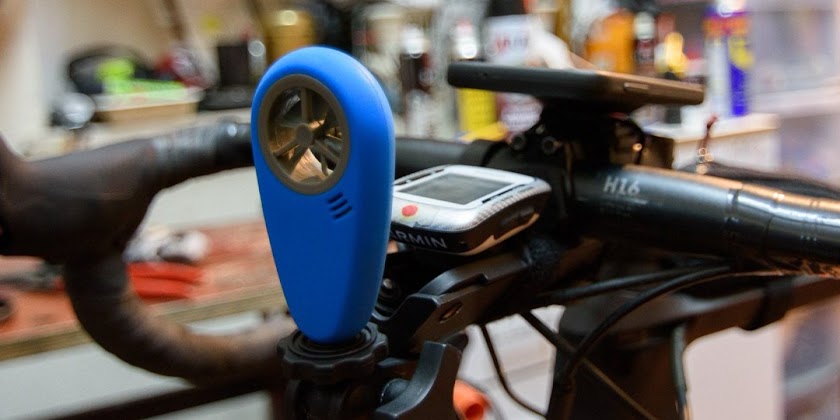Bad and good news from the velodrome test today. I implemented recently in the app, a dynamic procedure for calculating the correction factor to be applied to the raw air velocity measured by the anemometer. This factor is calculated at each lap. The anemometer (blue) was placed on the left drop of the bike during the test:
Several turns are made where I changed the position of my hands (hoods then drops, again hoods). Thus, we can see that when the left hand on the hood is close to the anemometer (certainly creating a local air acceleration), the calibration factor decreases by about 2% (1.095 to 1.075), and so a similar erreor increase of ~4% on the calculated CdA:
The good new is that if we keep a same position, the factor is well
calculated with acceptable variability +/- 0.5%. We can also assume that
by placing the bike's anemometer in another location, the issue may be reduced.



